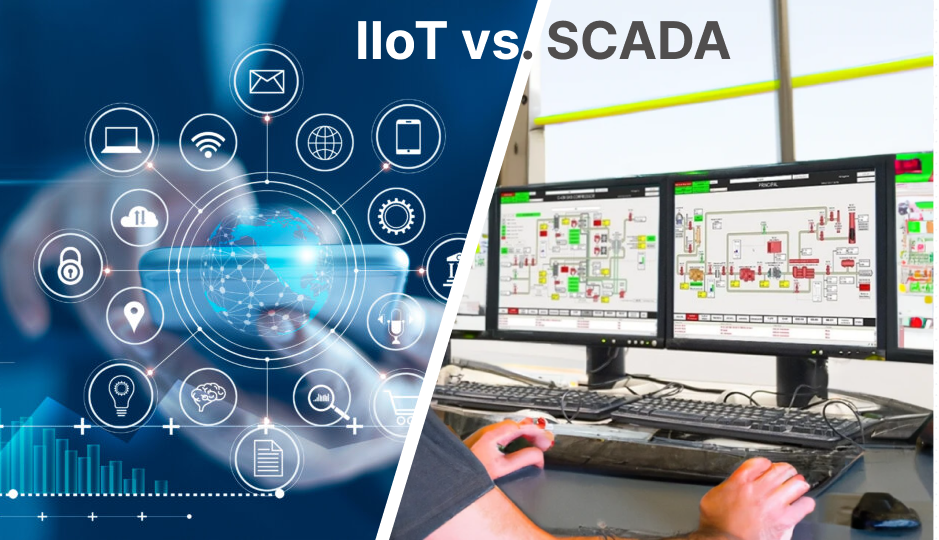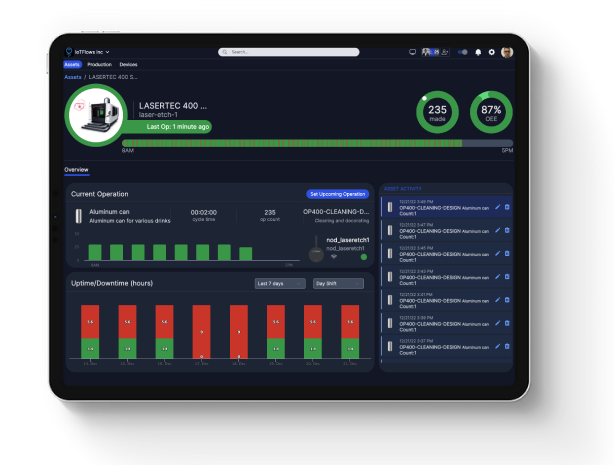SCADA vs. Newer Manufacturing Technologies: What's the Difference?
SCADA trying to compete in the new age of manufacturing and cloud technologies.

Manufacturing is constantly evolving, and the technologies used in manufacturing are no exception. SCADA (Supervisory Control and Data Acquisition) systems have been used in manufacturing for decades, but they are starting to be replaced by newer technologies such as Industrial Internet of Things (IIoT) and cloud manufacturing.
So, what's the difference between SCADA and newer manufacturing technologies? And which one is right for your business?
SCADA Systems
SCADA systems are used to monitor and control industrial processes. They typically consist of a central control room, a network of sensors and actuators, and a software system that collects data from the sensors, sends commands to the actuators, and displays the data and status of the process.
SCADA systems have been widely used in manufacturing for many years. They are relatively reliable and easy to use. However, they have some limitations. For example, they are not very flexible and can be difficult to change or adapt to new requirements. Additionally, they are not very scalable, meaning that they can be difficult to add new devices or processes to.
Newer Manufacturing Technologies
Newer manufacturing technologies, such as IIoT and cloud manufacturing, offer several advantages over SCADA systems. IIoT systems use sensors and actuators that are connected to the internet, which allows them to collect and send data in real-time. This data can then be used to monitor and control the process, as well as to identify and troubleshoot problems. Cloud manufacturing systems use cloud computing to store and process data, which allows them to scale more easily and provide greater flexibility.
Some of the key differences between SCADA and newer manufacturing technologies include:
- Data collection and analysis: SCADA systems typically collect data from sensors and store it locally. Newer manufacturing technologies, such as IIoT and cloud manufacturing, collect data from sensors and store it in the cloud. This allows for more detailed data analysis and the ability to track trends over time.
- Real-time monitoring and control: SCADA systems typically monitor and control processes, but it can be nearly impossible to unify devices due to a large number of manufacturers with variations of device models and different protocols, which can sometimes be proprietary. Newer manufacturing technologies, such as IIoT and cloud manufacturing, can monitor and control processes in real-time with seamless interconnectivity that facilitates communication and analysis between devices. This allows for faster response times and greater efficiency.
- Scalability: SCADA systems are typically not scalable, meaning that they can be difficult to add new devices or processes to. Newer manufacturing technologies, such as IIoT and cloud manufacturing, are more scalable, making it easier to add new devices and processes as needed.
- Flexibility: SCADA systems are typically not very flexible, meaning that they are difficult to change or adapt to new requirements. Newer manufacturing technologies, such as IIoT and cloud manufacturing, are more flexible, making it easier to change or adapt to new requirements.
SenseAi and Improving Manufacturing
SenseAi is the newest technology in manufacturing, it’s a powerful AI device that helps manufacturers improve their manufacturing processes in several ways. It does this by monitoring and analyzing the performance of machines based on vibration and acoustics data. This allows SenseAi to identify issues or inefficiencies in the production process and make data-driven decisions to improve performance.
Key benefits of using SenseAi, include:
- Easy to use and set up: SenseAi's simple three-step setup allows you to get started in minutes.
- Improved machine performance: SenseAi helps manufacturers to improve machine performance by tracking the entire fleet with real-time and historical uptime and downtimes, and part production.
- Improved overall equipment effectiveness (OEE): SenseAi can help manufacturers to improve OEE by identifying and addressing issues that are causing machines to be inefficient. This can lead to increased production and reduced costs.
- Powerful tracking: SenseAi platform analytics tracks the production of your parts and operations for your entire fleet, does comparative analysis, and determines which operations and machines are creating your biggest bottlenecks.
- Asset visibility: Shop-floor operators can now gain real-time visibility into machine production and status, enabling them to monitor the performance of their equipment and maximize their efficiency
- Advanced project management: Real-time visibility into project timelines and progress, allowing you to easily track and manage your projects and achieve your goals.

Which Technology is Right for You?
The right manufacturing technology for you will depend on your specific needs and requirements. If you need a reliable system that your organization is familiar with, then a SCADA system may be a good option. However, if you need a system that is flexible, scalable, and able to collect and analyze data in real-time, then a newer manufacturing technology may be a better choice.
Ultimately, the decision of whether to use a SCADA system or a newer manufacturing technology is up to you. Weigh the pros and cons of each technology and choose the one that best meets your needs.

